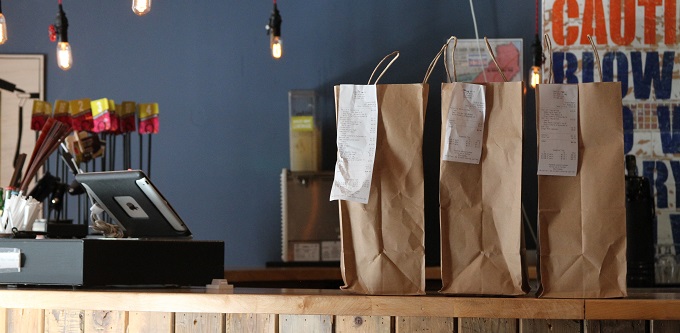
Digital disruption in fast-food retail is gathering even more pace, with new research showing online aggregators like Deliveroo and UberEats are booming in Australia.
The report from Morgan Stanley shows that since Menulog delivered its first meal in Australia back in 2006, the industry has grown into a $600 million market, with an expectation it will grow to $2.4 billion by 2025.
Menulog appears to currently be leading the charge, with $500 million of transactions generated from 9,000 restaurants each year. However, others are fast catching up as competition for market share heats up.
With the Australian market still underdeveloped compared to the likes of the UK, it’s predicted increasing population coverage and greater restaurant adoption will drive aggregators here to new heights.
Deliveroo Australia is just one such aggregator set to ride the wave and is firmly focused on new delivery models, last year revealing a “dark kitchen” format that will see food retailers use commercial kitchens as a base for fulfilling food deliveries, without the use of a shopfront.
Deliveroo Australia country manager Levi Aron says growth in demand for food delivery in Australia is clear to see.
“We’ve been monitoring things over the past two and a half years since launching in Australia and in the last 6-12 months, the momentum of free delivery has been on the increase,” he tells SmartCompany.
“We started off in St Kilda and Surry Hills and now we’re covering 10 regions across the nation.”
Aron says now that the industry has undergone its initial education piece, consumers are increasingly taking advantage of the convenience afforded by the platforms.
“It’s no longer just about coming home to an empty pantry after work. We now deliver lunch offerings at work, whether it’s in extreme heat or pouring rain, or dinner offerings for those staying late at work.”
And the rapid uptake, he says, is driving higher revenues for the restaurants listed.
“Through everything we’re doing, we’re able to increase restaurants’ revenues into times when they’re traditionally not busy. Typically Sunday night is quiet, so we’re increasing volume orders for them at times like that.”
Technological advancements have also seen aggregators like Deliveroo able to improve their dispatch algorithms to improve delivery times.
“When we first launched in Australia, it took us 32 minutes to deliver – now it’s 28,” explains Aron.
“And that makes for a better customer experience for us and the restaurants we work with.”
But there’s still disquiet in some corners over the commission structures at play. Last year, business owners spoke to SmartCompany about the significant costs associated with listing on a delivery platform like UberEats.
Co-founder of Queensland burger business Burger Urge, Sean Carthew, says the amount platforms take in commissions on orders might not be sustainable.
The Morgan Stanley report shows restaurants typically pay a 35% commission on order value to an aggregator providing delivery service and 13% to Menulog, where the business pays for listing their restaurant but must provide their own delivery drivers.
“On our modelling, we see that a long term sustainability position would be half that – 15-20% could be viable. We think they’re overpriced by 10-15%,” Carthew says.
Carthew urges caution for anyone considering signing up to a food delivery platform, saying it’s not an automatic profit generator.
“It’s not a formula for making money. There’s a lot more challenges in it and there’s a question around the quality of the product when it reaches the end consumer and the damage that some of these drivers may do to brands if they’re not professional in the way they engage with customers.”
Never miss a story: sign up to SmartCompany’s free daily newsletter and find our best stories on Twitter, Facebook, LinkedIn and Instagram.


COMMENTS
SmartCompany is committed to hosting lively discussions. Help us keep the conversation useful, interesting and welcoming. We aim to publish comments quickly in the interest of promoting robust conversation, but we’re a small team and we deploy filters to protect against legal risk. Occasionally your comment may be held up while it is being reviewed, but we’re working as fast as we can to keep the conversation rolling.
The SmartCompany comment section is members-only content. Please subscribe to leave a comment.
The SmartCompany comment section is members-only content. Please login to leave a comment.